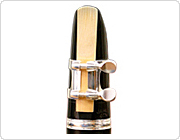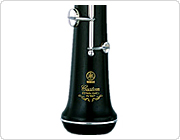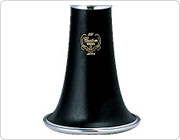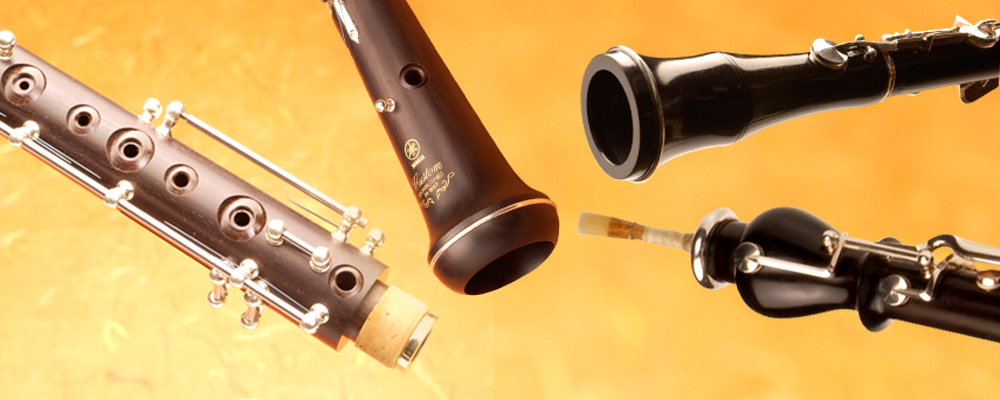The Structure of the Oboe
What kind of instrument is the oboe?
Learn what the parts are called!
The names of the different parts of an oboe
What is the difference between an oboe and a clarinet?
With its black body and silver-colored keys, to the eye, the oboe looks like a larger version of the clarinet. However, the two instruments differ completely in several respects.
First, there are the parts into which the player blows. The clarinet has a mouthpiece which is connected to a single reed. Conversely, while the oboe has no mouthpiece it does have two reeds-the oboe is a double-reed instrument.
The shape of the bell is also quite different. The bell of an oboe does not extend as far as that of a clarinet, and it is also thicker.

The opening of an oboe.

The opening of a clarinet.

An oboe's bell.

A clarinet's bell.
The inside is very narrow!
The inside of an oboe is very narrow, indeed, with the internal diameter of the upper portion of the upper section measuring only around 4 mm. The diameter grows wider the closer to the bell, forming a cone.
The hole for blowing into on an oboe is narrow, so only a little bit of the player's breath can enter. In other wind instruments, it tends to be difficult for the player if they do not have sufficient breath volume, but in the case of the oboe, there tends to be too much breath. This is by no means easy on the player. Because oboe players use their breath little by little, playing a long melody using a single breath is almost like a sustained stretch of breath-holding. This causes carbon dioxide to accumulate in the lungs during performances. Because players have to breathe in after exhaling long-held breaths all at once, it also takes longer for oboe players to take a breath than it does for players of other wind instruments.

A cross-section of an oboe.
Musical Instrument Guide:Oboe Contents
Structure
How to Play
How the Instrument is Made
Choosing an Instrument
Trivia
- Why does the oboe lead the orchestra in tuning?
- Do the reeds have a front and a back?
- The keys recoil via springs!
- This is how the oboe and the cor anglais differ
- The charumera was the oboe's cousin
- You can reduce time spent breathing using circular-breathing techniques?
- The Wiener oboe that survived an existential crisis
- Oboe masterpieces: concertos
- Oboe masterpieces: chamber music
- What is the alto oboe?
- The heckelphone, which resembles the oboe
- The oboe is the bassoon's cousin

























